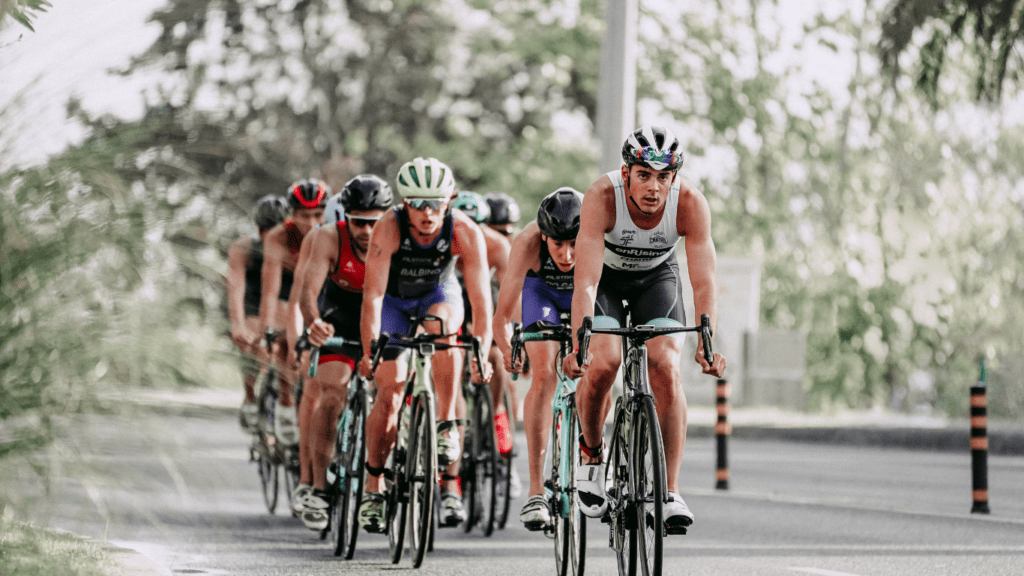What Is Cycling for a Cause?
Cycling for a cause involves riding a bike to support various charitable initiatives. Participants raise funds and awareness while enjoying physical activity and the camaraderie of fellow cyclists.
Understanding Charity Rides
Charity rides are organized events where participants cycle to raise money for specific causes. These events vary in distance and difficulty to accommodate different fitness levels.
Organizers often set a fundraising goal for each participant. Examples of popular charity rides include the American Diabetes Association’s Tour de Cure and the Pan-Mass Challenge, which raises funds for cancer research.
Benefits of Participating in Charity Rides
Participating in charity rides benefits both the individual and the community. Riders can improve their fitness while contributing to a meaningful cause.
The social aspect of these events fosters connections among like-minded individuals. Additionally, completing a ride often provides a sense of accomplishment.
Local communities also benefit as these events raise awareness and funds for important issues. Charity rides bring people together, promoting a healthy lifestyle and social responsibility.
Finding Charity Rides Near You
To find charity rides in your area, you can use local event calendars and connect with cycling clubs. These resources will help you locate and participate in events supporting various causes.
Local Event Calendars
Local event calendars often list upcoming charity rides. Websites like Eventbrite regularly feature these events. Municipal websites also publish local event schedules, including charity rides.
Checking these calendars will keep you informed about nearby opportunities. Libraries and community centers sometimes have bulletin boards with event listings.
Cycling Clubs and Groups
Cycling clubs and groups are great sources for finding charity rides. Many clubs have members who participate in or organize these events. Websites for clubs typically list upcoming rides and events.
Participating in social media groups dedicated to cycling also helps. These platforms often share information about charity events. Joining a local club or Facebook group can lead to discovering more opportunities to ride for a cause.
Preparing for Your First Charity Ride
Participating in a charity ride can be both rewarding and challenging. To make the most of the experience, preparation is key.
Training Tips
Start training several weeks before the event to build endurance. Incorporate a mix of long rides, interval training, and rest days into your schedule. Aim to increase your mileage gradually each week.
For instance, if you begin with 10 miles, try increasing to 15 miles the next week.
Join local group rides to gain experience and motivation. Training with others provides support, encouragement, and helps mimic actual event conditions.
Groups often share valuable tips on pacing and road safety, which are crucial for a successful ride.
Cross-train to improve your overall fitness. Activities like swimming and running enhance cardiovascular health and strengthen muscles not typically used in cycling.
This holistic approach prevents overuse injuries by working different muscle groups.
What to Bring
- Pack essential items to ensure a comfortable and safe ride. Bring a properly-fitted helmet, as head protection is non-negotiable.
- Wear moisture-wicking clothing to stay dry and comfortable throughout the ride.
- Padded cycling shorts can prevent saddle soreness.
- Carry a small repair kit equipped with a spare tube, tire levers, and a mini pump. This helps address common mechanical issues quickly.
- Bring a multi-tool with various hex wrenches and screwdrivers to handle minor adjustments on the go.
- Hydrate by bringing two water bottles or a hydration pack.
- Nutrition is vital, so pack energy gels, bars, and snacks rich in carbohydrates and electrolytes to maintain energy levels.
- Use a cycling computer or GPS to track your progress and stay on the intended route.
- Devices with turn-by-turn navigation are particularly useful for longer rides.
- Lastly, bring identification and a small amount of cash or a credit card for emergencies.
Preparing meticulously enhances your experience and ensures you can focus on riding for a cause without distractions.
Highlighting Popular Charity Rides

Cycling for a cause inspires many to participate in charity rides across the country. These events merge the passion for cycling with the drive to support meaningful causes.
Nationwide Events
Many charity rides draw cyclists from all over the nation.
The American Diabetes Association’s Tour de Cure takes place in multiple states and offers routes for various skill levels. Cyclists raise funds to support diabetes research and education.
The Pan-Mass Challenge is another significant event, contributing to cancer research via the Dana-Farber Cancer Institute. This ride boasts impressive participation and impactful fundraising, making it a top nationwide option.
Here’s a list of notable nationwide charity rides:
- Tour de Cure (American Diabetes Association): Multiple states, supporting diabetes research.
- Pan-Mass Challenge: Massachusetts, funding cancer research at Dana-Farber Cancer Institute.
- Bike MS (National MS Society): Various locations, raising awareness and funds for multiple sclerosis.
- The Ride To Conquer Cancer (Multiple Myeloma Research Foundation): Numerous states, dedicated to cancer research funding.
- Great Cycle Challenge USA: Nationwide, cyclists set personal distance goals to fight childhood cancer.
Regional Highlights
In addition to nationwide events, several regional charity rides enable cyclists to support local causes. The California Coast Classic offers scenic routes from San Francisco to Los Angeles, supporting the Arthritis Foundation. Meanwhile, the Pelotonia in Ohio empowers riders to fund cancer research at The Ohio State University Comprehensive Cancer Center.
Highlighted regional charity rides include:
- California Coast Classic: San Francisco to Los Angeles, benefiting the Arthritis Foundation.
- Pelotonia: Ohio, supporting cancer research at The Ohio State University.
- The Dempsey Challenge (Maine): Lewiston, supporting the Dempsey Center’s cancer support services.
- Tour de Cure Colorado: Denver, aiding the American Diabetes Association.
- Ride the Rockies: Colorado, benefiting Denver Post Community Foundation’s programs.
These rides not only support notable causes but also offer unique regional experiences, engaging the cycling community and fostering local support.
How to Maximize Your Impact
Cycling for charity can make a powerful difference. Here’s how you can enhance your contribution to these causes.
Fundraising Strategies
Effective fundraising ensures your charity ride reaches its financial goals. Start by setting a clear fundraising goal. Share this goal with potential donors, friends, and family to inspire their support.
Utilize social media platforms to reach a wider audience. Personalize your message by sharing why the cause matters to you.
Hold fundraising events like bake sales, garage sales, or virtual events; these can attract donations while engaging your community.
Contact local businesses for sponsorship opportunities and offer them advertising or promotional benefits in return.
Spreading Awareness
Raising awareness amplifies the cause beyond the ride itself. Share the mission and details of your charity ride on social media platforms using relevant hashtags and tagging the organization involved.
Write blog posts and share stories of those who benefited from the cause. Reach out to local media outlets for coverage and interviews. Engage with local clubs, schools, and groups to spread the word.
Volunteers or supporters can help distribute flyers and posters in community centers or high-traffic areas.

 I’m Brendamee McCartyierr, and as the founder of Cycle Smooth Ride Long, I'm thrilled to bring you the ultimate resource for all things cycling. Whether you're a seasoned rider or just starting on your cycling journey, our mission is to support your passion for two wheels with trusted advice, insightful reviews, and expert tips.
Cycling is more than just a hobby—it's a lifestyle that promotes health, freedom, and adventure. At Cycle Smooth Ride Long, we’re committed to making your ride smoother, longer, and more enjoyable by providing you with the latest in cycling news, nutrition advice, fitness tips, and gear reviews. We also cater to beginners, offering comprehensive guides to help you get started and build confidence on the road.
I’m Brendamee McCartyierr, and as the founder of Cycle Smooth Ride Long, I'm thrilled to bring you the ultimate resource for all things cycling. Whether you're a seasoned rider or just starting on your cycling journey, our mission is to support your passion for two wheels with trusted advice, insightful reviews, and expert tips.
Cycling is more than just a hobby—it's a lifestyle that promotes health, freedom, and adventure. At Cycle Smooth Ride Long, we’re committed to making your ride smoother, longer, and more enjoyable by providing you with the latest in cycling news, nutrition advice, fitness tips, and gear reviews. We also cater to beginners, offering comprehensive guides to help you get started and build confidence on the road.
